
 Photography by John Jackson
Photography by John Jacksonegardless of your age, if you are into old-timey hot rods then you know of and understand the look of many of the dry lakes–era hot rods. Dale Grau of Minnesota has been around modified cars for many decades and appreciates the hot rods of the dry lakes era. Presented on these pages is his Brookville Roadster–bodied ’32 Ford three-window highboy coupe, one of 19 Deuce hot rods he owns. He built this one to honor the classic dry lakes imagery as well as to drive and enjoy.
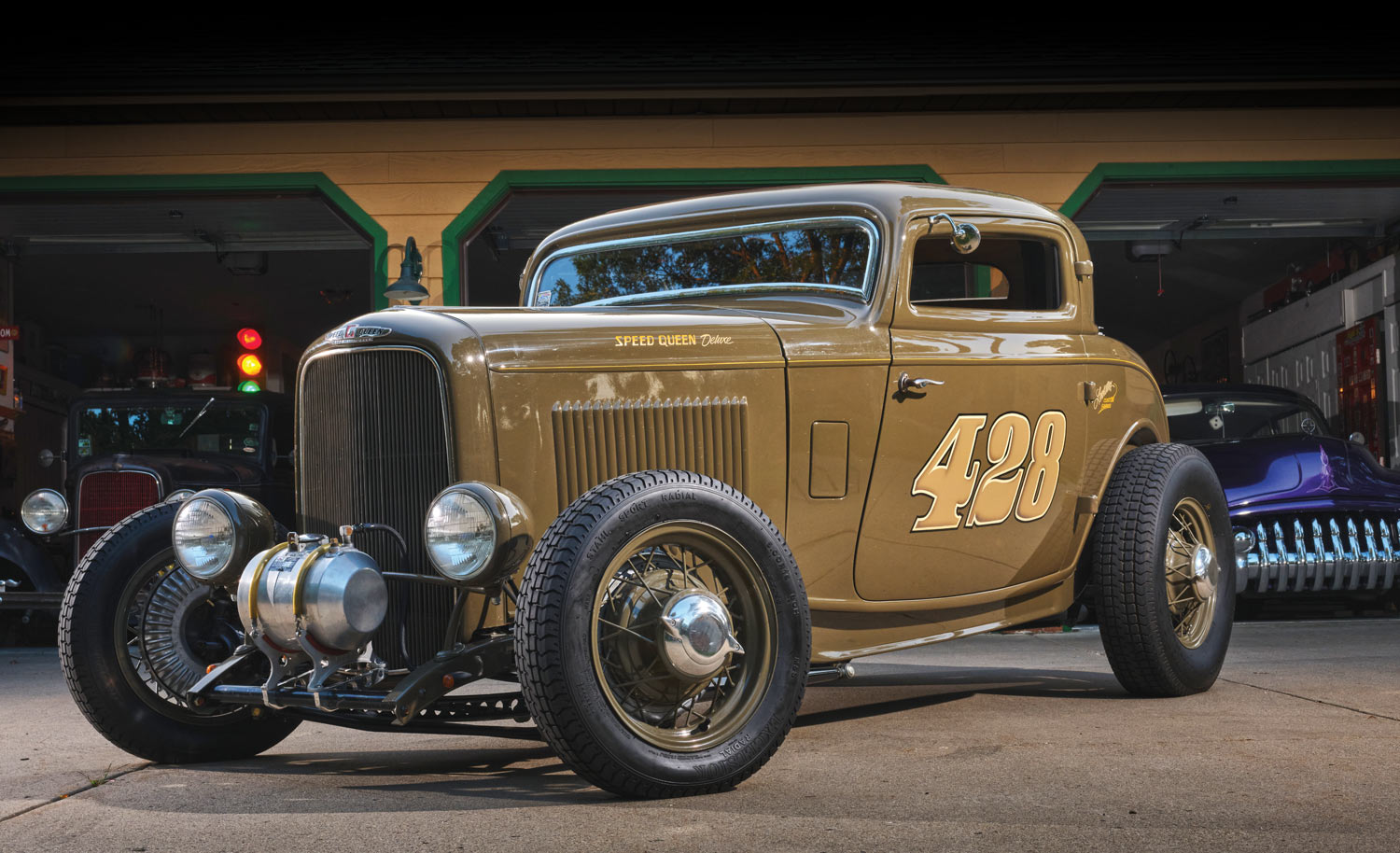


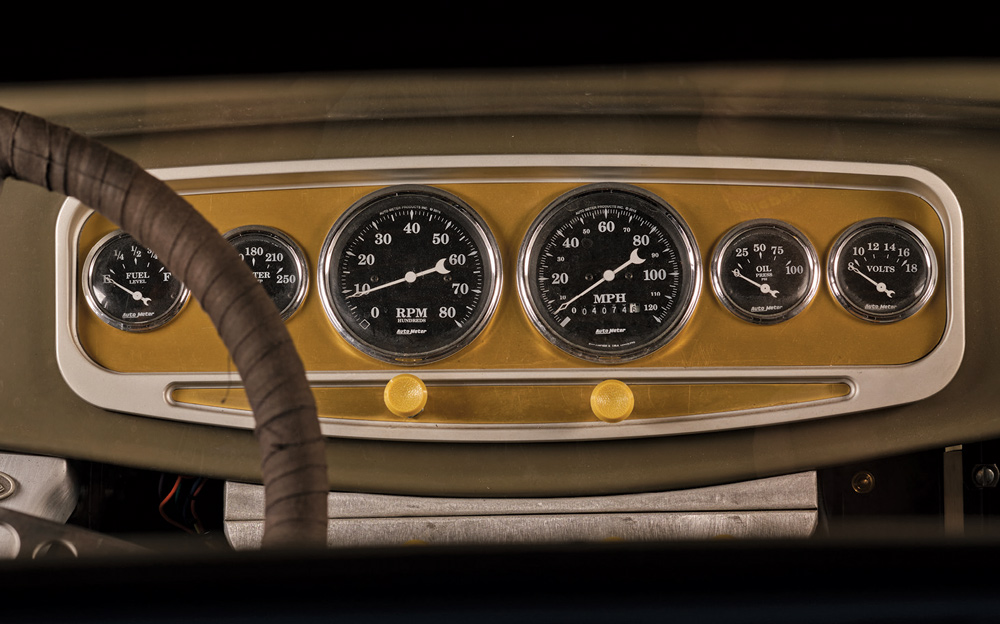
All this reverence to vintage hot rodding rests on additional modern metal with the frame based on freshly minted American Stamping ’rails that were assembled by Rjays Speed Shop (Butler, Missouri). While at Rjays the ’rails received the obligatory hot rod mods via boxing plates, tubular crossmembers, and a Model A rear crossmember. The bobbed and pinched ’rails were more Lenk handiwork.
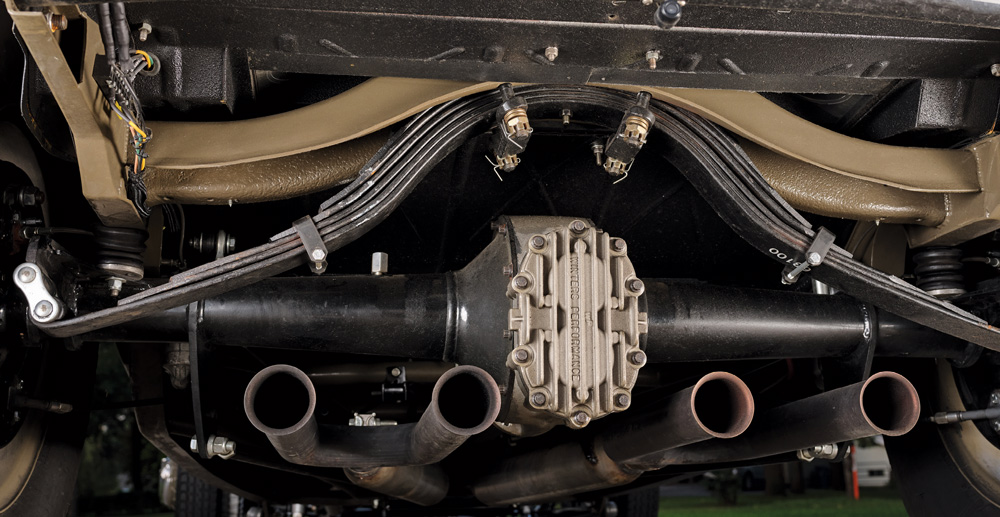
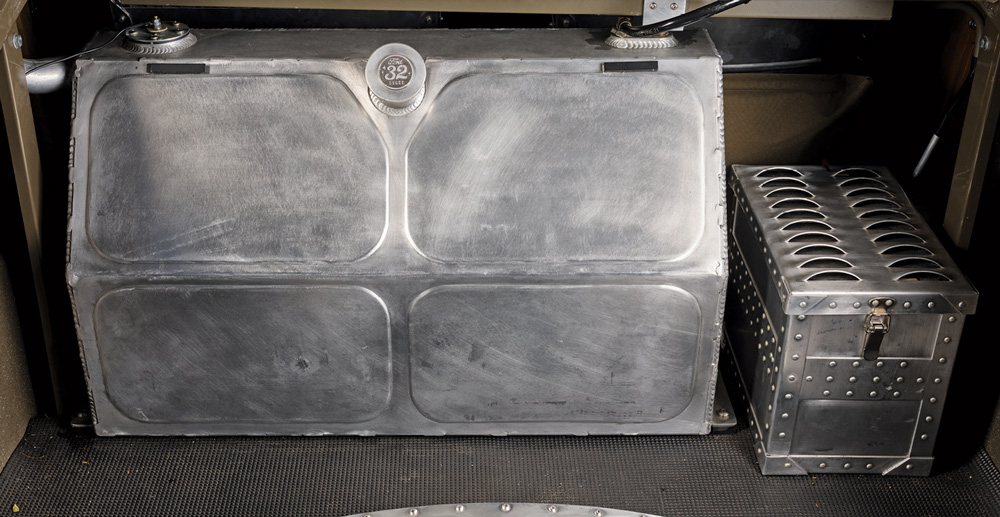

You will find a full set of Ford wire wheels but with a little bit of a mix-and-match grouping. In front, you will see ’35 Ford 16-inch wires while in back you will find ’33 Ford 17-inch wires that were widened several inches by Lenk. Wrapped around the vintage wires are the Coker-produced Excelsior Stahl radial rubber by way of Speedway Motors; 4.50×16 and 7.50×17, respectively.

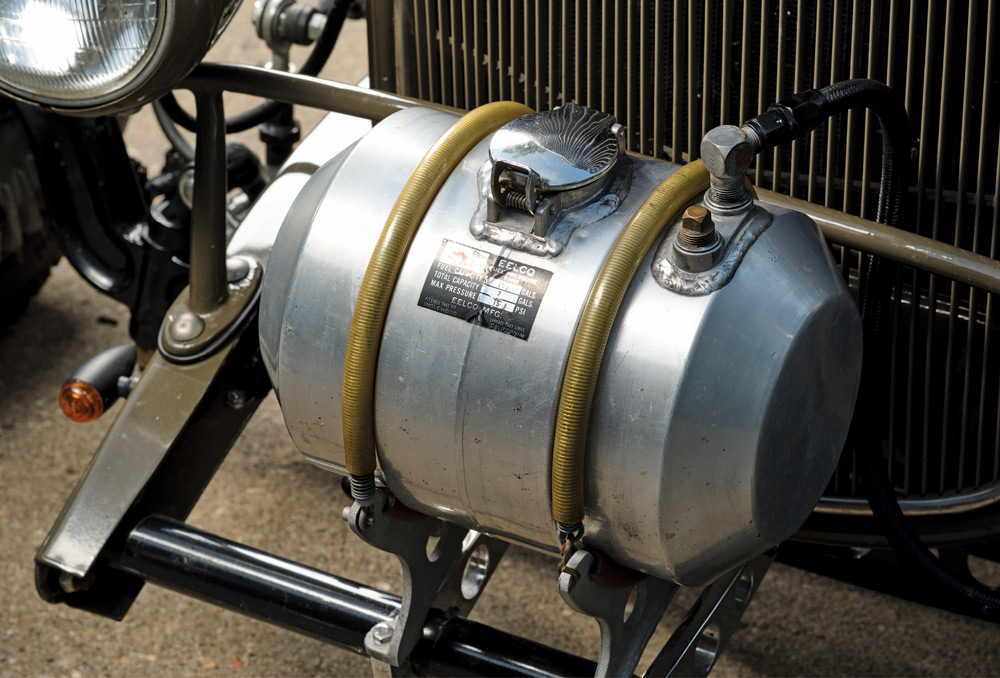

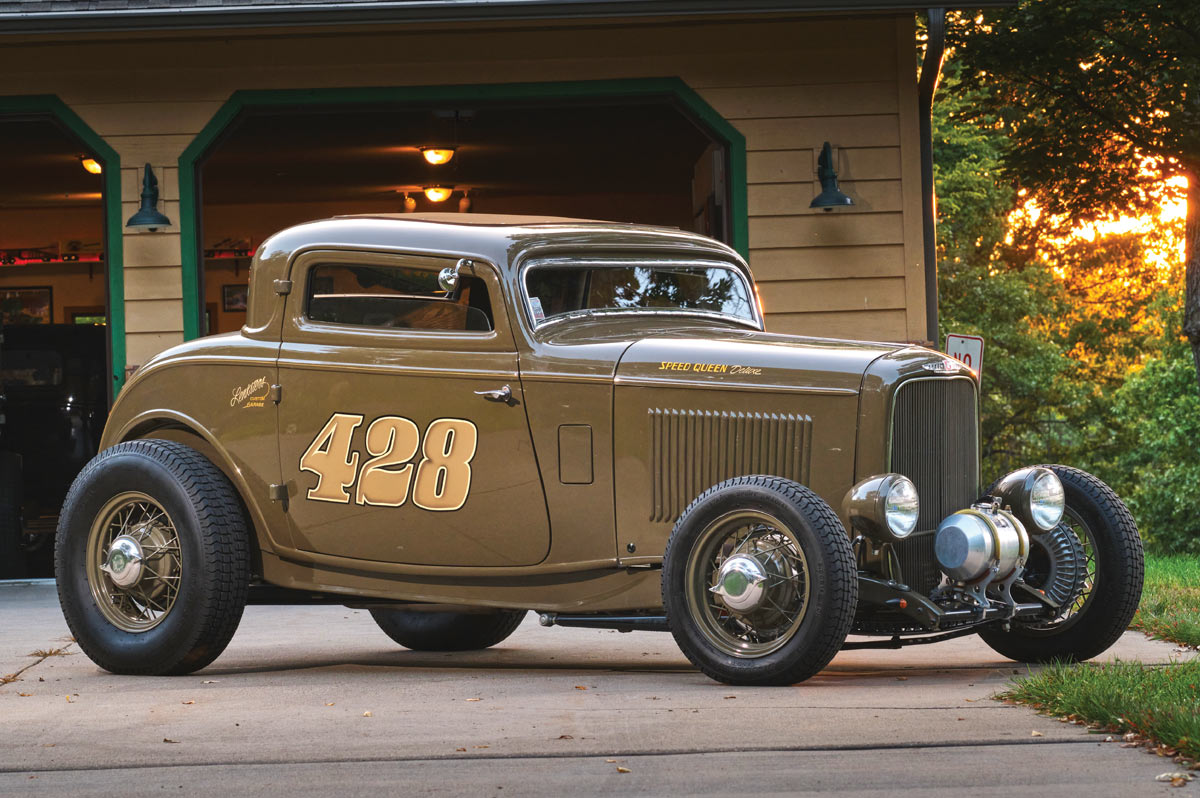
Although not vintage by the hot rod’s depicted era, the small-block Chevy V-8 is considered vintage given it’s an ’87 iron block sporting a mild 0.030-inch overbore. The small-block was built at Magnum Engines. The SBC is mounted to the frame with a pair of very cool “claw” engine mount pads that come through the efforts of Jokerr Fabrication (Indiana). The vintage, black, wrinkle-finish, cast-aluminum valve covers come by way of PML and reside on top of the iron heads that also feature factory ram’s-horn exhaust. The intake is an early Edelbrock as noted by the oil fill tube; note the sock, an old trick to catch blowby that would otherwise “gunk up” the engine compartment. The Edelbrock four-barrel rests under the early stock air cleaner and has its gas lit by an electronic PerTronix ignition system running through a modern alternator. The battery is trunk-mounted and rests in its own fabricated aluminum box adjacent to the gas tank. All the aluminum trunk effort is more of Lenk’s accomplishments. The remainder of the exhaust system, which includes the glasspack mufflers, was custom fabricated by Fat Joe Racing.
Oh, in closing, if you are wondering why the number “428” is on the door, it’s Dale’s birthday, April 28. Now you know the “rest of the story.”